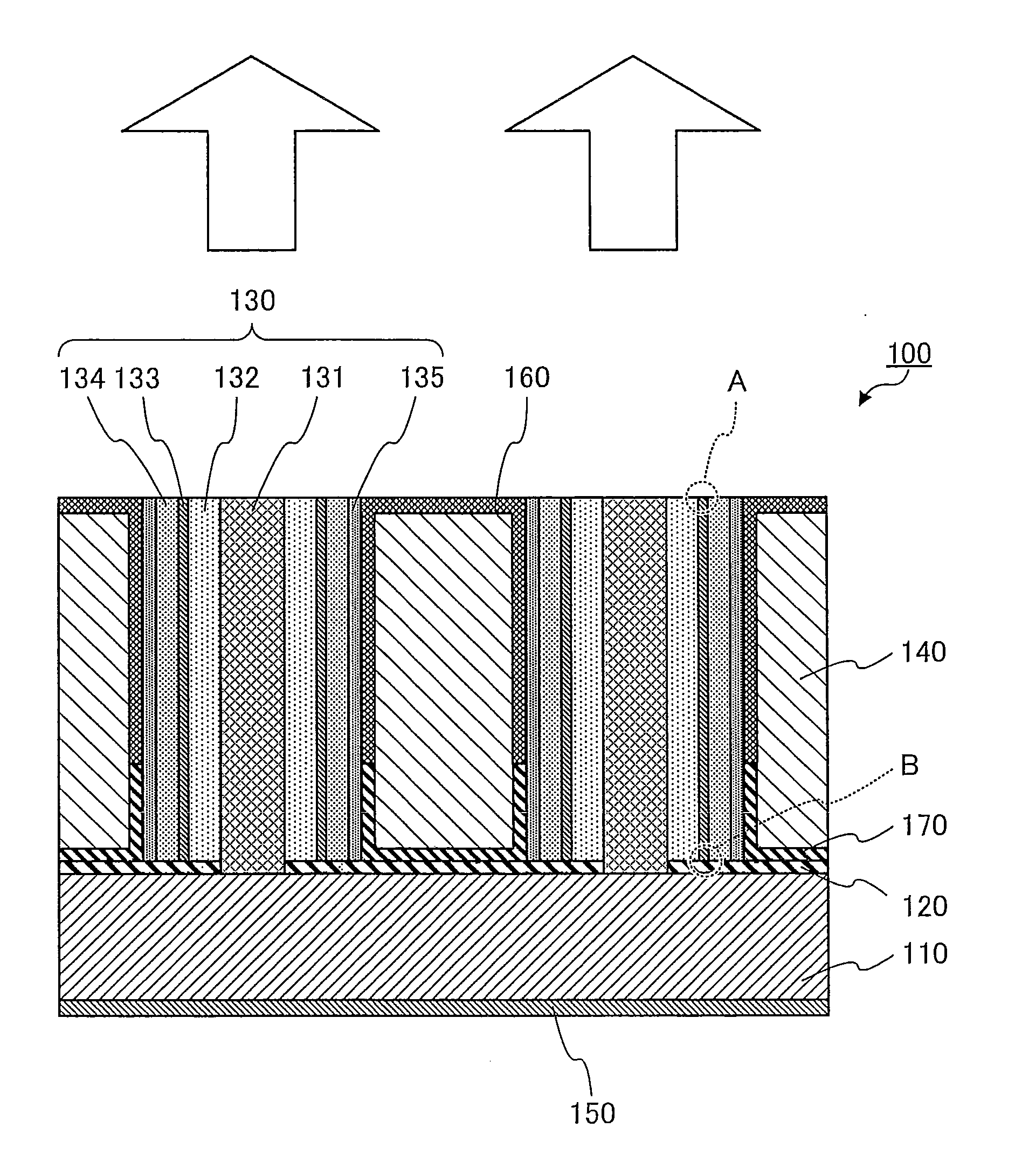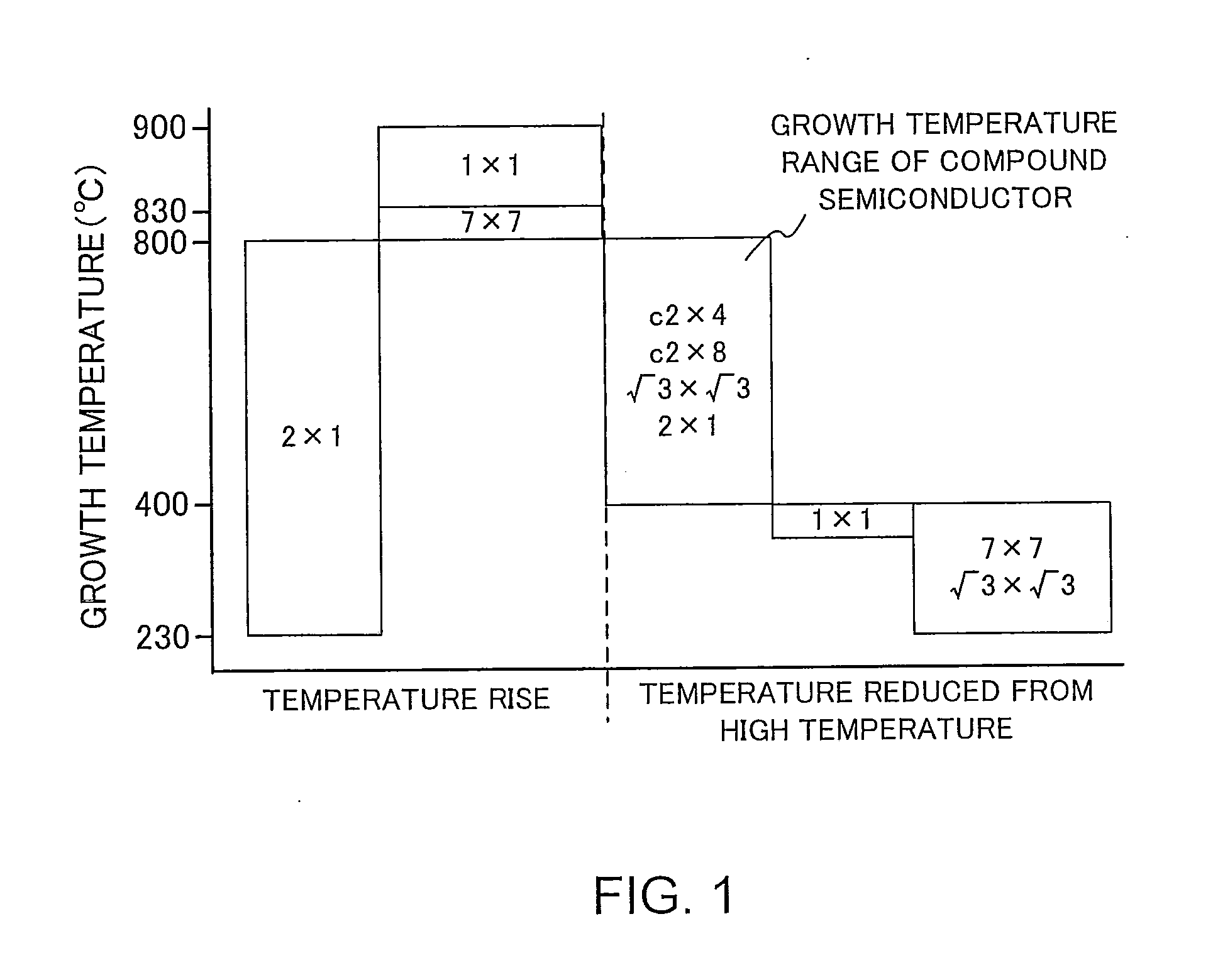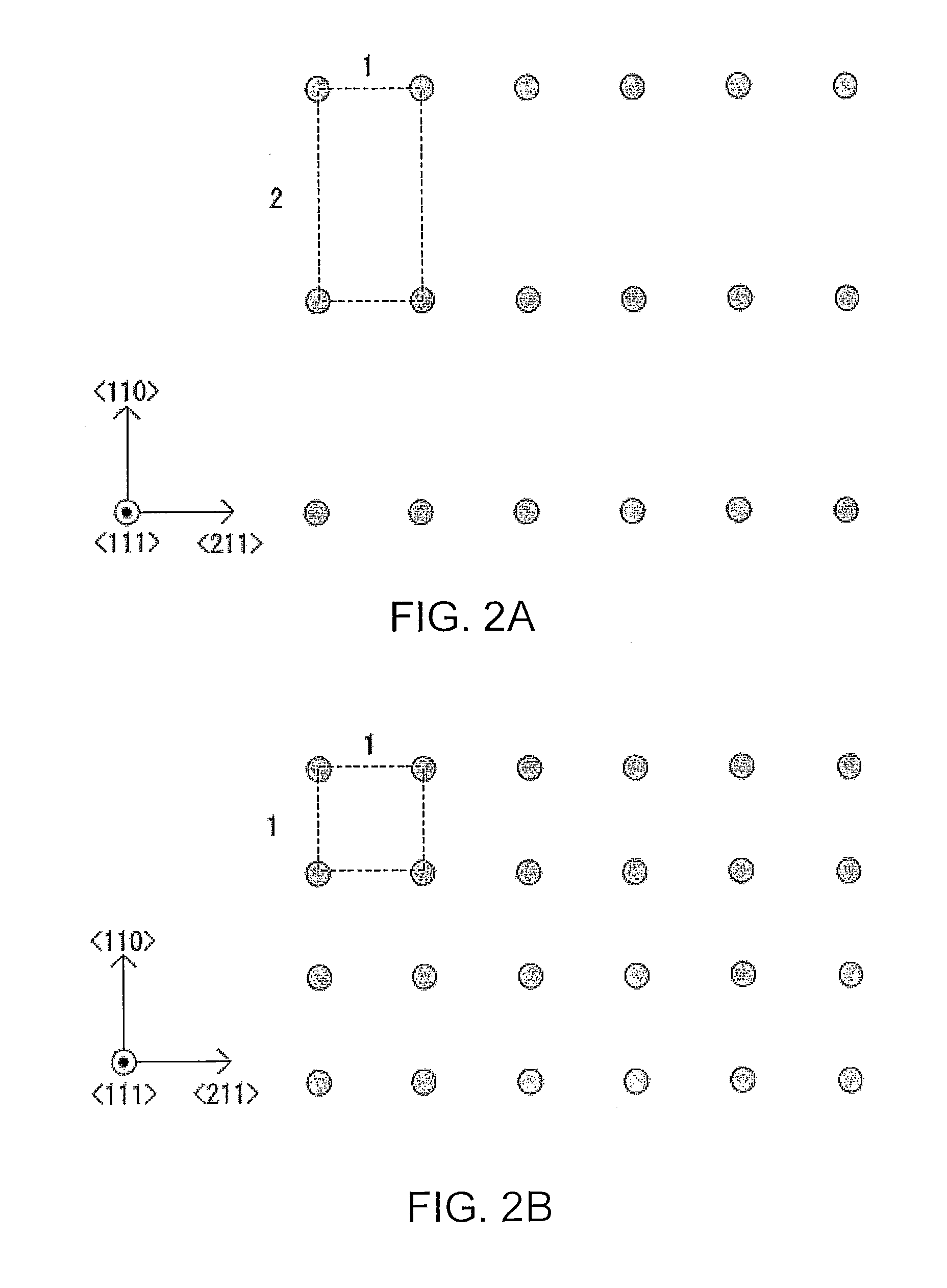Light emitting element and method for manufacturing same
a technology of light-emitting elements and manufacturing methods, which is applied in the direction of lasers, semiconductor devices, semiconductor lasers, etc., can solve the problems of high power consumption, high power consumption, and power consumption reduction,
- Summary
- Abstract
- Description
- Claims
- Application Information
AI Technical Summary
Benefits of technology
Problems solved by technology
Method used
Image
Examples
embodiment 1
[0182]An example light emitting element of the present invention that includes an n-type silicon (111) substrate is provided for Embodiment 1.
[0183]FIG. 3 is a cross-sectional view of the structure of a light emitting element of Embodiment 1. FIG. 4 is a cross-sectional view of a core-multishell nanowire for the light emitting element of Embodiment 1 (a diagram of the cross section, perpendicular to the surface of a substrate).
[0184]As shown in FIG. 3, a light emitting element 100 of Embodiment 1 includes an n-type silicon substrate 110, an insulating film 120, core-multishell nanowires 130, an insulating resin 140, a first electrode 150, a second electrode 160, and a dielectric film 170. As shown in FIG. 3 and FIG. 4, each of the core-multishell nanowires 130 includes: a center nanorod 131, formed of an n-type III-V compound semiconductor; a first barrier layer 132, formed of an n-type III-V compound semiconductor; a quantum well layer 133, formed of an i-type III-V compound semico...
embodiment 2
[0200]An example light emitting element for the present invention that has a p-type silicon (111) substrate is provided for Embodiment 2.
[0201]FIG. 8A is a cross-sectional view of the structure of a light emitting element for Embodiment 2. FIG. 8B is a cross-sectional view (a diagram for a cross section parallel to the surface of the substrate) of a core-multishell nanowire for the light emitting element of Embodiment 2. The same reference numerals as used for the light emitting element of Embodiment 1 are provided for the corresponding components, and an explanation for the overlapping portions will not be given.
[0202]As shown in FIG. 8A, a light emitting element 200 of Embodiment 2 includes a p-type silicon substrate 210, an insulating film 120, core-multishell nanowires 220, an insulating resin 140, a first electrode 230, a second electrode 240, and a dielectric film 170. As shown in FIG. 8A and FIG. 8B, each of the core-multishell nanowires 220 includes a center nanorod 221 form...
embodiment 3
[0209]An example light emitting element of the present invention wherein spaces between core-multishell nanowires are filled with a semi-insulating semiconductor is provided in Embodiment 3.
[0210]FIG. 9 is a cross-sectional view of the structure of a light emitting element for Embodiment 3. The same reference numerals as used for the light emitting element of Embodiment 1 are provided for the corresponding components, and an explanation for the overlapping portions will not be given.
[0211]As shown in FIG. 9, a light emitting element 300 for Embodiment 3 includes an n-type silicon substrate 110, an insulating film 120, core-multishell nanowires 130, a semi-insulating semiconductor 310, a first electrode 150, a second electrode 160, and a dielectric film 170. As shown in FIG. 9, each of the core-multishell nanowires 130 includes: a center nanorod 131, formed of an n-type III-V compound semiconductor; a first barrier layer 132, formed of an n-type III-V compound semiconductor; a quantu...
PUM
 Login to View More
Login to View More Abstract
Description
Claims
Application Information
 Login to View More
Login to View More - R&D
- Intellectual Property
- Life Sciences
- Materials
- Tech Scout
- Unparalleled Data Quality
- Higher Quality Content
- 60% Fewer Hallucinations
Browse by: Latest US Patents, China's latest patents, Technical Efficacy Thesaurus, Application Domain, Technology Topic, Popular Technical Reports.
© 2025 PatSnap. All rights reserved.Legal|Privacy policy|Modern Slavery Act Transparency Statement|Sitemap|About US| Contact US: help@patsnap.com



